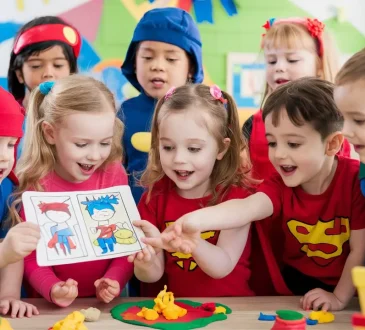
Getting all your students focused, eager, and on task all through class is challenging. Learn how to keep students engaged in class here.
Did you know that our attention spans depend on age? The general rule of thumb is to multiply their age by 4 to get a child’s attention span. A first-grader who is 6, for example, should have an attention span of 24 minutes.
If this seems like a long time to you, that’s because it is. Even though they are capable of paying attention that long, it doesn’t mean they will. Instead, teachers need to learn how to keep students engaged to make sure they really are paying attention.
If you’re looking for ways to keep your students of all ages engaged, keep reading. We’ve got some tips and tricks for you to make sure your students are staying with you.
- Encourage Meaningful and Relevant Connections
Make your examples in class relevant and meaningful to students. We’ve all seen books or worksheets with out-of-date examples, names, and scenarios. Use ones that are timely and resonate with your students, no matter their age.
Ask them about their own experiences and use those examples in your teaching. It’s easy to incorporate their interests into lessons focusing on language arts, for example. You can create sentences, reading passages, and spelling words centered around things that your students are interested in.
- Use Movement to Generate Focus
Using a song, foot-stomping, hand-clapping, or finger-snapping is an easy way to get students out of their seats and engaged. Use these techniques to teach math facts, history, social studies, spelling, and patterns.
As kids get older, you can incorporate partner activities with this as well.
- Use Signaling to Allow Everyone to Answer
There are always one or two students in every class who know the answer before everyone else. If these students constantly raise their hands first or call out the answer, other students won’t even bother trying. If they know they are slower than others to answer, they’ll just sit back and let others lead.
If you let your students know that you expect an answer from everyone and then ask for a signal when they’re ready, everyone will have the opportunity to formulate an answer. You could have them raise their hand, give a thumbs up, or have them use sign language to indicate that they have an answer.
- Use Stimulating Activities and Exercises
Do your best to incorporate stimulating activities and exercises into your lessons. For example, to teach students about the elements, use an interactive periodic table.
Incorporate group activities, songs, drama exercises, art-based learning, and other activities to help your students learn. Stimulating activities also help to reach different learners, which is the next tip on our list.
- Mix Up Your Teaching Style
Not all students learn the same way, so mixing up your teaching style will help you reach all of your students. A combination of lectures, discussions, group projects, stories, word games, reading, drawing, or solving puzzles can help different types of learners succeed in your class.
Changing things up will reach all of your students while also keeping them engaged and interested in the lesson.
How To Keep Students Engaged: Try These Tips
How to keep students engaged is likely something you’ll need to work at constantly. It’s easy to find yourself in a rut of doing the same thing day after day, class after class.
For more tips and tricks for teaching and learning, explore some of the other posts on our site.




